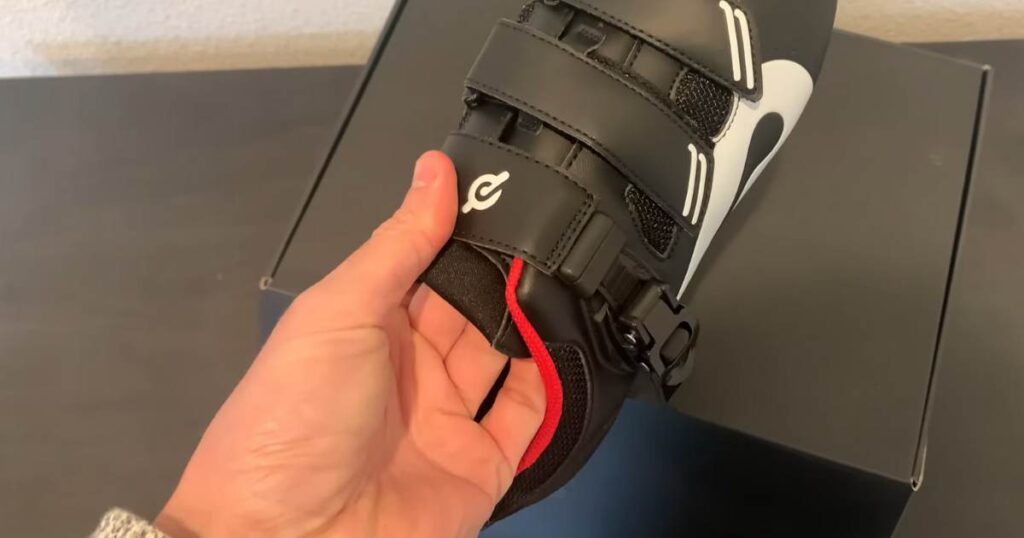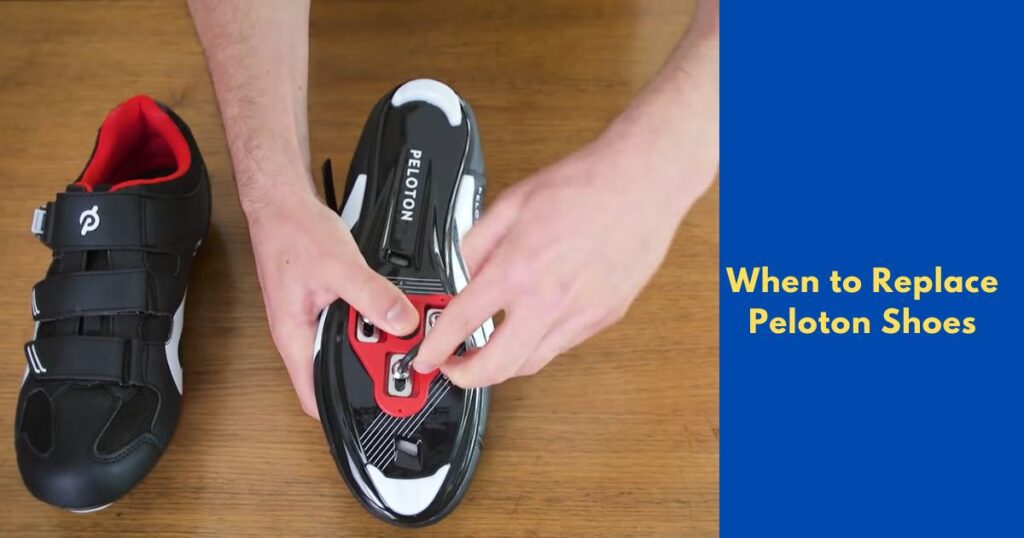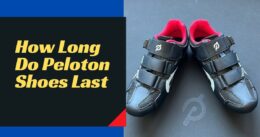Ever wondered about the lifespan of your Peloton shoes? It’s like having a workout buddy who’s been through every sprint, hill climb, and victory dance with you
It’s not just about footwear; it’s about the silent partnership between you and your shoes, surviving every workout battle together. I’ve done some serious digging (we’re talking hands-on research), and I’m here to spill the beans on shoe longevity. Together, let’s ensure your Peloton shoes keep delivering the pedal power, problem-free. Ready to ride into the shoe saga with me?
Factors Affecting Peloton Shoe Lifespan
Quality of Materials
Peloton shoes are made with really good stuff. The upper part, the one that wraps around your foot, is crafted from comfy, breathable materials that flex with your foot movements. The bottom part, the sole, is made from tough rubber that grips well and supports your feet during those intense pedaling sessions. Basically, these shoes are built to last because of the awesome materials. When you’re checking out Peloton shoes, think about the cool materials they’re made of – it’s like the superhero suit for your feet, ready to take on any cycling adventure!
Frequency of Use
So, how often you use your Peloton shoes really matters. If you’re riding like there’s no tomorrow every day, your shoes might feel the impact sooner. It’s like having a favorite pair of sneakers – if you wear them non-stop, they wear out quickly. To keep your Peloton shoes kicking, try to give them a breather. Maybe switch between a couple of pairs if you can. It’s like letting your shoes catch their breath so they can be your workout buddies for the long run. Oh, and storing them in a cool, dry place when you’re not using them? That’s like giving them a cozy little vacation spot.
Maintenance Practices
Keeping your Peloton shoes in tip-top shape is as easy as giving them a quick wipe-down after your rides. Imagine your shoes are like your trusty sidekick, and you want them to look and feel their best. A damp cloth is all you need to clean away the sweat and dirt. And here’s a superhero tip: be gentle; harsh cleaning stuff might not be their cup of tea. Checking your shoes for any signs of wear and tear is like giving them a little health check. Fixing up worn-out parts and making sure everything is in good shape means your shoes stay happy, and you stay happy pedaling away! It’s the small things that keep your Peloton shoes going strong.
Signs of Wear and Tear

Visual Inspection
Identifying Visible Signs of Wear:
Take a close look at your Peloton shoes – are there any cracks, frayed bits, or weird color changes? These are signs that your shoes might be feeling the wear and tear. Check the seams where things get stitched together; if they look like they’re unraveling, that’s a red flag. Also, look at the soles; if they seem to be wearing unevenly, it might mean your cycling technique needs a tweak or the shoes are getting tired.
Common Areas Prone to Damage:
Peloton shoes have their weak spots, mainly the toe box and heel that take a beating during workouts. Keep an eye out for any weird shapes or squishes in these areas. Don’t forget the closures, like Velcro or buckles – if they’re not doing their job, your shoes might not be staying on your feet like they should. Catching these issues early helps you keep your shoes in the game.
Performance Indicators
How to Recognize a Decrease in Performance:
If your shoes aren’t feeling as snug as they used to, it’s like losing a bit of power during your pedal pushes. It’s not just about fit; comfort matters too. Feeling less cozy or struggling to keep your grip on the pedals? That’s your shoes telling you they might need a breather.
Impact of Worn-Out Shoes on Workouts:
Wearing tired Peloton shoes is like biking with a flat tire. You won’t get the same kick from your pedal strokes, and discomfort might creep in. Plus, there’s a safety dance – you want your shoes to grip those pedals, especially when you’re standing up. Replace your worn-out kicks to keep the energy high and the rides smooth! Your feet will thank you.
How Long Will My Peloton Shoes Last?
Ever wondered about the lifespan of your trusty Peloton shoes? Well, on average, they’re designed to stick with you for 1 to 3 years, assuming you’re pedaling away a few times a week. But let’s break it down a bit. The more you sweat it out with high-energy workouts, the quicker your shoes might show signs of wear – just like how a favorite pair of sneakers might give in after some serious miles. And here’s the thing: the materials in your Peloton shoes matter. The better the quality, the longer they’ll likely last. But hey, it’s not just about your workouts; your weight, workout space conditions, and how you treat your shoes also play a part. So, keep an eye out, clean ’em up, and maybe they’ll ride shotgun with you for even longer. Happy pedaling!
Tips for Extending Peloton Shoe Lifespan
Storage Tips: Give Your Shoes Some Breathing Room
Keeping your Peloton shoes in top shape is as simple as giving them a breather after those intense workouts. After your ride, let them air out by taking out the insoles and leaving them in a cool, dry spot. No need for fancy setups—just avoid dark, stuffy corners. Consider using shoe trees to keep them in good form. Oh, and don’t forget to shield them from too much sun or extreme weather. Think of it like letting your shoes chill after a workout—they’ll thank you for it!
Get Creative, but Mind Your Moves
Sure, Peloton shoes are gym champs, but some folks get inventive and use them for other activities like weightlifting or light jogs. If you’re into that, cool! Just keep an eye on your shoes for any wear and tear. Using them for different things might speed up the aging process. Remember, these shoes are like superheroes for Peloton workouts, so pushing them too hard might wear out their cape. Balance is key—find the sweet spot between being versatile and making your Peloton shoes last. Your shoes will love the attention!
When to Replace Peloton Shoes

Spotting Wear and Tear
Let’s talk about the signs that say your Peloton shoes are ready to retire. First up, give the soles a good look. If the treads are looking flatter than pancakes, especially in the spots that take the most beating during your rides, it’s time to think about an upgrade. Losing grip on those pedals isn’t just a nuisance—it can mess with your workout and even put you at risk of slipping.
Now, shift your gaze to the upper part of your shoes. Check for any fraying seams or cracks, especially if you’ve been sweating up a storm in these kicks. And don’t forget the straps or dials that keep your shoes snug. If they’re starting to act finicky or show signs of wear, it’s a telltale sign your shoes might be on their last spin.
Keeping Your Feet and Joints Happy
Why does it matter? Well, beyond the obvious style points, it’s about avoiding unnecessary aches and pains. Think of it like this: your shoes are like shock absorbers for your feet. Over time, the cushiony midsole that gives you that bounce starts to wear out. If you notice your shoes feeling a bit flat or not so bouncy anymore, it’s not just about comfort—it’s about preventing potential joint stress and injuries. Listen to your body; if those post-ride twinges are becoming more common, your shoes might be silently urging you to invest in a fresh pair. Your feet will thank you, and your Peloton sessions will be back on track. Happy cycling!
Newer Models or Versions
What’s Cool in the Latest Peloton Shoes?
So, Peloton has been busy upgrading their shoe game, and it’s pretty exciting. The new models are like the cool kids in town, boasting materials that keep your feet cool and comfy during those intense pedaling sessions. They’ve tinkered with straps and buckles too, making sure your shoes stay snug without putting too much stress on them. And guess what? The insoles got an upgrade for better arch support—no more sore feet! It’s like they took all the feedback from users and said, “Let’s make these shoes even better!”
Are the New Shoes Tougher Than the Old Ones?
Now, let’s talk durability. The new Peloton shoes are like the superheroes of the shoe world. They’ve got better materials, so no more worrying about seams fraying or the sole falling apart. Compared to the older models, it’s like they hit the gym and got stronger. If the old shoes had some weak spots, the new ones are like the bodyguards, reinforced in all the right places. So, if you’re thinking of upgrading, it’s not just about being trendy; it’s about getting shoes that can handle the sweat and intensity of your Peloton workouts without breaking a sweat themselves. Upgrade to durability, my friend!
Frequently Asked Questions
How long do Peloton shoes typically last?
The lifespan of Peloton shoes can vary based on usage and care, but on average, they last between 12 to 24 months with regular use.
What factors affect the longevity of Peloton shoes?
Factors include frequency of use, intensity of workouts, proper maintenance, and the type of surface they’re used on. Regular cleaning and avoiding excessive wear can extend their lifespan.
CONCLUSION
As we wrap up our chat about ‘How Long Do Peloton Shoes Last,’ think of them like trusty workout buddies. Picture this: with regular use and a bit of TLC, your Peloton shoes are like pals joining you on countless fitness adventures. They’re more than just shoes—they’re witnesses to your fitness journey, silently cheering you on with every pedal. So, lace up, spin on, and let those shoes be your companions in staying fit and fabulous. Cheers to many more miles together!


